Buy LED light bulbs
Buy LED light bulbs for your home; soon incandescent lamps will be unavailable and rightly so; they draw far too much current.
On average an LED uses about seven times less power; and they last at least four times longer than a traditional incandescent globe. That above in our kitchen is now thirteen years old; I would recommend a double for a larger room.
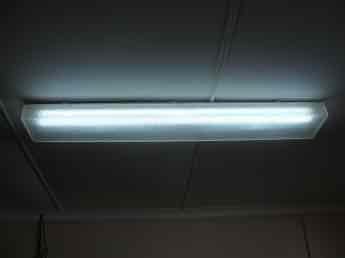
This page was last updated by Bernard Preston on 8th July, 2025.
If putting in an active or passive solar water heater is energy wise, the first step in going green and reducing your reliance on utility power companies, then replacing incandescent globes with these light emitting diodes is the second.
Frankly you're going to be forced to do this anyway; the old fashioned energy guzzlers will soon no longer be available. Although they too are more energy efficient, I cannot recommend compact fluorescent lamps; filled with mercury vapour and very fragile they are too dangerous.
In any event, an LED uses a quarter of the power of a CFL.
Are there any drawbacks before making the decision to go out and buy LED light bulbs for your home or office? Several come to mind.
- They have electronic components and do not like power surges; that's not common in most countries.
- They are at present more expensive than other bulbs; already we are seeing the price coming down as more folk turn to more efficient lighting.
- The light itself is rather different and may get some getting use to; they are brighter. However, manufacturing companies are getting on top of this and a much larger array of LEDs is now available. Those with a diffusing dome are more friendly on the eyes.
LED lighting lamps
So, why make the change to these new gadgets? An average incandescent lamp burns about 60 to 100 watts of energy; most of it goes to heat and only a small fraction to light.
Perhaps you have a little angst about buying LED light bulbs but shortly it will be the norm. I have no other in my home; they come in bright and warm, the latter being easier on the eyes; and there are already more options.
Most indoor reading and general lighting LED lighting lamps require 3 to 6 watts of electricity; that's about one twentieth, or five percent of the energy of the old globes with a filament.
Would you like to see your electricity bill dropping by 95 percent? Then consider a change to these bright LED lights.
That's an exaggeration of course; most of the energy consumption in the house goes to cooking and heating but the decision to buy LED light bulbs is an important second step, after putting in a solar geyser for your hot water.
Buy LED Light Bulbs
Buy LED light bulbs even though they are more expensive; they last much longer and use a fraction of the electricity.
Depending on the price of electricity in your country and how many hours per day you use it, the payback time is roughly 2 to 6 years.
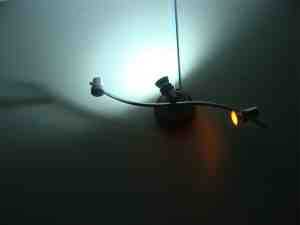
Meaning of LED
Above me where I am typing at my computer, is a lamp fitting. I started with three 3W globes but that was dazzling; I now have one super bright LED and a soft 2 watt yellow light. It's more than adequate.
What is the meaning of LED you may be asking? It stands for light emitting diode. It's a piece of electronic gadgetry; the earliest were only red and used to show that your television was powered up, for example. Today they are available covering the whole visible spectrum.
When the correct voltage is applied, an electron may leave an atom and jump to a higher energy state; when it returns it will release photons of light. The colour emitted will correspond to that gap.
First discovered over half a century ago by Nick Holonyk, they have only become common place in home and commercial lighting in the last fifteen years or so.
It is no good saying you couldn't be bothered; you will have to make the change soon. Incandescent lamps will simply no longer be available and for good reason; they are such energy guzzlers.
Luckily you have no more need to understanding the meaning of LED than how your computer or car works.
What may frustrate you initially is that they these lamps come with several different fittings. Do you have the old bayonet base in your globes? There are a few terms to be learned; those are called BC holders. They are available in LED.
Originally the most common American fitting was the ES or Edison Screw base. Today it's been shortened to just E26, for example.
However there appears to be a move to standardise things to one of three different fittings.
- The large E26 or 27 screw base. It's about an inch in diameter.
- The smaller E12 threaded base; they are twelve millimetres in diameter for the metricated folk; about half an inch.
- The GU12 has two prongs sticking out of the base of the lamp fitting and is the one I personally chose initially for no particular reason.
If you're planning a new home then make a choice between the above three and be consistent. But even if you already have an existing dwelling, choose one as your favourite and when buying new lights, make sure it has the right fitting.
Actually it's not difficult to change the base. The GU12 holder is very inexpensive and I have changed many of our older bayonet BC fittings.
So have you got the LED meaning? A light emitting diode that very efficiently turns electricity to photons that you can use to brighten up your home; they make great reading lamps.
Be certain that from now on you only buy super bright LED light bulbs for the busy areas in your home; the softer ones for a different ambience. I've only had to replace two in three years. We get big surges in power periodically.
Yes they do take a bit of getting used to. I recommend you experiment with the bright and soft versions; and those with a light-diffusing dome. Try different colours to brighten up your home; it's cheaper than changing the paint.
I only have one bayonet left and that we've kept for sentimental reasons; it's in a lamp that was given to me by a friend who has passed on. But once that globe dies, sentiment will cease and we'll buy LED light bulbs again.
One other not so small advantage is that you can turn them on and off without affecting their longevity; but in fact, even if you left every single light on in your house it would hardly affect your electricity bill. One ordinary 60W incandescent bulb uses the same energy as 20 of the bulbs that I have.
Once you've made the change to LED, having to go around switching off lights ceases to be an issue; the saving is so marginal when you are using 3 to 5 watt bulbs.
Dud LED lights
How long do LED lights last? Frankly no one is sure. But the claims of 50,000 hours are in my opinion over the top; these are two of our dud LED lights.
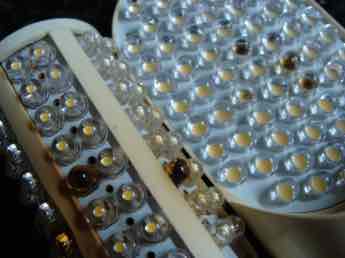
Neither of these two globes reached 10,000 hours. It's possible that their demise came about through dirty mains power that we get, but I'm not convinced; an overvoltage protection device is advisable. Some on our pure sinewave inverter power haven't either however.
But they still outlast conventional globes, are quite safe with no dangerous mercury emissions, and of course use a fraction of the energy of incandescent lights; most others are now five years old and have been very satisfactory.
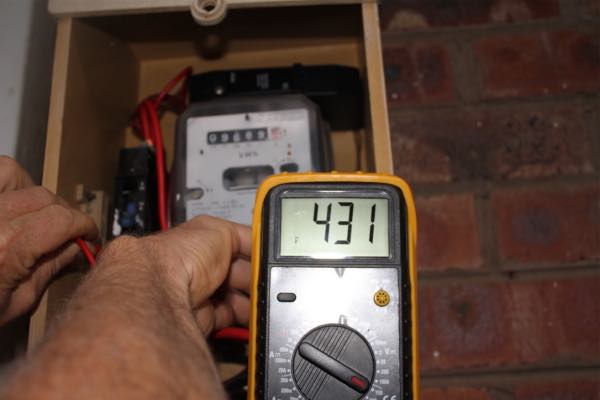
This is our problem in South Africa; a power surge blew out all the LED globes that were switched on. Going off the grid is a subject I'm having to revisit.
How do LEDs work?
Well, perhaps you actually are interested in how do LEDs work. It's a semiconductor that conducts electricity in one direction only; there are two bits of silicone, one dabbed with a coating of boron, and antimony on the other; they emit photons of lights as the electric current passes through them.
It uses only low voltage, direct current, so a little converter, called a 'driver' is needed to change the incoming high voltage AC.
Herein lies a potential problem, but really only on industrial installations. Although LEDs draw very little current, at the instant they are turned on each uses over 250 times the rated current for less than a millisecond; enough to trip the breaker. It's called the 'inrush current.' The industrial solution is a 'zero voltage crossing contactor' but you're unlikely to need one in your home.
Generator
Building a solar generator that could make us totally independent of the grid has been enormously satisfying. We haven't gone the whole way because it means a huge investment in batteries that's not yet justified.
There's enormous research going into batteries and it won't be long before the electric car phenomenon brings the much needed spill over to green homes wanting to go off the grid.
Residential Solar Panels
At the heart of your solar generator is the so called PV panel; it captures the energy from Mr Golden Sun, as my grand daughter calls him, and turns it into usable electrical energy. You too could turn your home into a solar farm. They pay back time is around 5 to 7 years if you do it yourself.
Purchase the very largest residential solar panels available; they're getting larger and cheaper all the time.
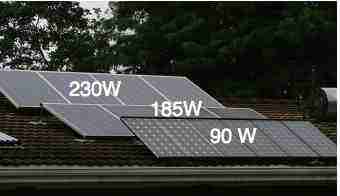
The first step of this solar journey though is to completely dump all your incandescent globes and compact fluorescent lamps, and go out and buy LED light bulbs. Simple. If you don't do it now, you will within a year or two.
You'll find a large and confusing selection available. This link from someone who has researched the performance comparison of GU10 LED bulbs is interesting; find it at forums.whirlpool.net.au/archive/1951172.
Fluorescent light fittings to LED
Changing fluorescent light fittings to LED requires one small adaptation. You'll need an electrical screwdriver and a short length of single core wire.
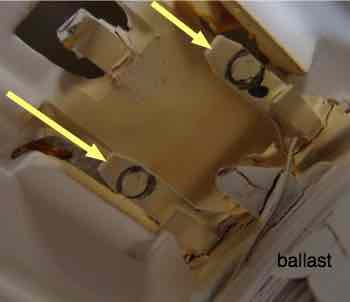
Forward planning flop
In 2003, twelve years ago, the cabinet of South Africa set a target of 10,000 GWh from renewable sources. In 2015, only 1760 MW has been provided.
Clearly the average South African cannot reply on the government to supply his need for electricity. Buying LED light bulbs is a small part of the solution; much more important it to consider how you can generate your own solar power energy, and store it in batteries for the inevitable total blackout that surely awaits us.
We have plenty of solar power energy available in South Africa; it's the third best country in the world to build a solar farm. Against the backdrop of failure by the government to fulfil its own targets, comes a massive rise in the price of electricity making your own solar generator economically viable.
In 2017 the utility has applied for a 30% increase in the price of electricity; they won't get it, but 20% might be approved. Home built solar generators are becoming ever more attractive and cost effective. We have just had a three and half day black out; never was I more pleased to have a solar farm on our roof; but you build it on the ground if you can.
How diodes work
When you buy LED light bulbs you don't have to know how diodes work; they are incorporated in the design.
Most of us, for one reason or another, I being one, start too small and then want to increase the size of your solar farm as the harsh realities of a failing society become ever more evident. Often that means a mismatched system of differing panels and voltages. How diodes work is part of the solution to ensure you can have 90W panels, and massive 305W panels working together without a hiccup.
Solar power energy is readily available, but some understanding of the physics is necessary. You don't have to be a bof, but you must be ready to ready and talk to others who are in the know.
There are massive decision to be made up front; should you have a grid-tied system, or a bank of batteries? Should you be considering a few west facing solar panels, and a host of other questions.
Bedside lights
Bedside lights should be positioned above the mattress and directed over the shoulder; LED lights bulbs are perfect for a powerful directed beam that will be less likely to waken your partner in the night should you be unable to sleep.
Pretty lights on a bedside table are a recipe for neck pain and eye strain.
Useful links
- East facing solar panels for your early morning coffee.
- Solar powered generator.
- What's the ROI on LEDs?
When browsing use right click and "Open Link in New Tab" or you may get a bad gateway signal.
The material expressed on this page is gleaned from the nutritional and environmental literature; it is clearly referenced. A plain distinction is made between the author's opinion and that which is scientifically proven. When in doubt consult your health professional.
To suggest a correction or clarification, write to Dr Bernard Preston here. Contact.
Newsletter
Our newsletter is entitled "create a cyan zone" at your home, preserving both yourself and Mother Earth for future generations; and the family too, of course. We promise not to spam you with daily emails promoting various products. You may get an occasional nudge to buy one of my books.
Here are the back issues.
- Lifestyle and ideal body weight
- What are ultra-processed foods?
- Investing in long-term health
- Diseases from plastic exposure
- Intensive lifestyle management for obesity has limited value
- A world largely devoid of Parkinson's Disease
- The impact of friendly bacteria in the tum on the prevention of cancer
- There's a hole in the bucket
- Everyone is talking about weight loss drugs
- Pull the sweet tooth
- If you suffer from heartburn plant a susu
- Refined maize meal and stunting
- Should agriculture and industry get priority for water and electricity?
- Nature is calling
- Mill your own flour
- Bake your own sourdough bread
- Microplastics from our water
- Alternative types of water storage
- Wear your clothes out
- Comfort foods
- Create a bee-friendly environment
- Go to bed slightly hungry
- Keep bees
- Blue zone folk are religious
- Reduce plastic waste
- Family is important
- What can go in compost?
- Grow broad beans for longevity
- Harvest and store sunshine
- Blue zone exercise
- Harvest and store your rainwater
- Create a cyan zone at your home
Did you find this page interesting? How about forwarding it to a friendly book or food junkie? Better still, a social media tick would help.
Address:
56 Groenekloof Rd,
Hilton, KZN
South Africa
Website:
https://www.bernard-preston.com